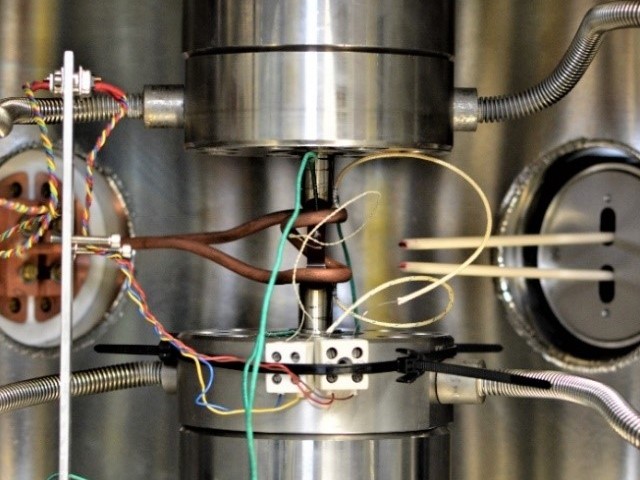Material characterisation of metallic materials under thermal and mechanical loads at temperatures from -180 °C to over 1000 °C
Regardless of whether the component design is carried out according to the safe life method or is subject to damage tolerance, for both design philosophies, corresponding material parameters under operational loads are of major importance.
In order to fulfil this mission, the »Experimental Thermomechanics« team has an extensive range of testing machines with state-of-the-art experimental technology and a profound expert knowledge in the field of high-temperature testing of metallic materials under thermal and mechanical loads at temperatures up to over 1000 °C.
The focus here is on static tests such as tensile and creep tests or low-cycle (LCF), high-cycle (HCF) and nonisothermal (TMF) fatigue tests. By superimposing LCF/HCF and TMF/HCF loading, for example, high-cycle combustion processes can be simulated. The use of hydrogen as an alternative gas turbine fuel in future low-emission power generation will result in a significant change in the thermal stresses of gas turbine components, e.g. the combustion chamber. The operational behaviour of the materials can be tested, for example, by iso- and nonisothermal crack propagation measurements - also under inert gas atmosphere or high vacuum.
For very special applications, customised test rigs for component-near specimens can be realised according to customer requirements.
 Fraunhofer Institute for Mechanics of Materials IWM
Fraunhofer Institute for Mechanics of Materials IWM